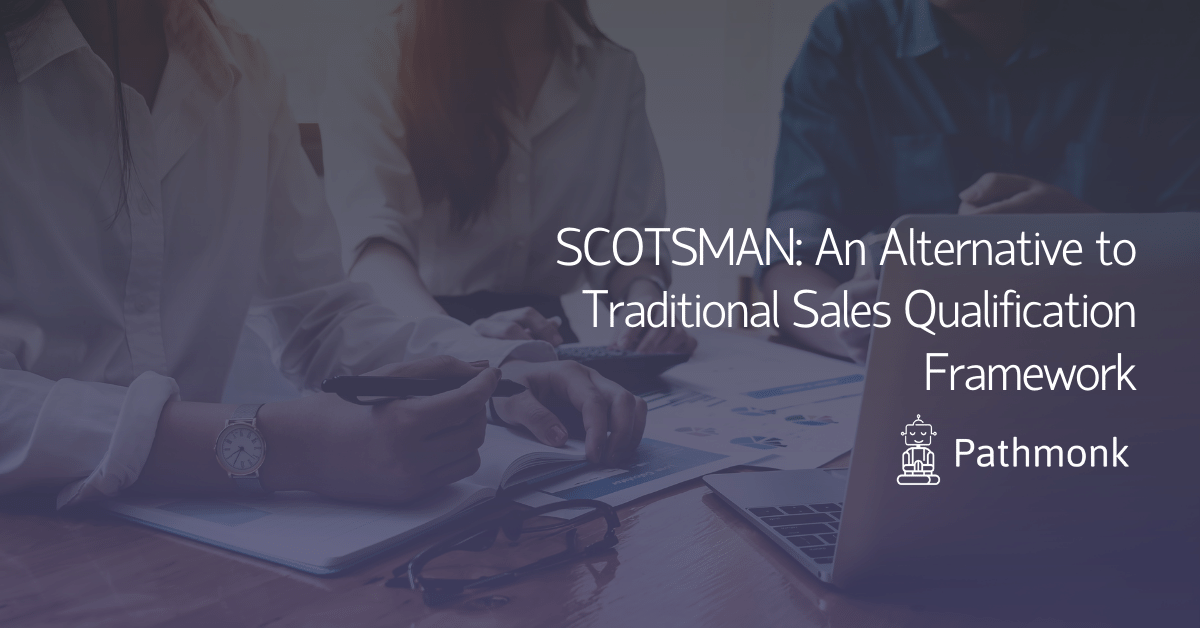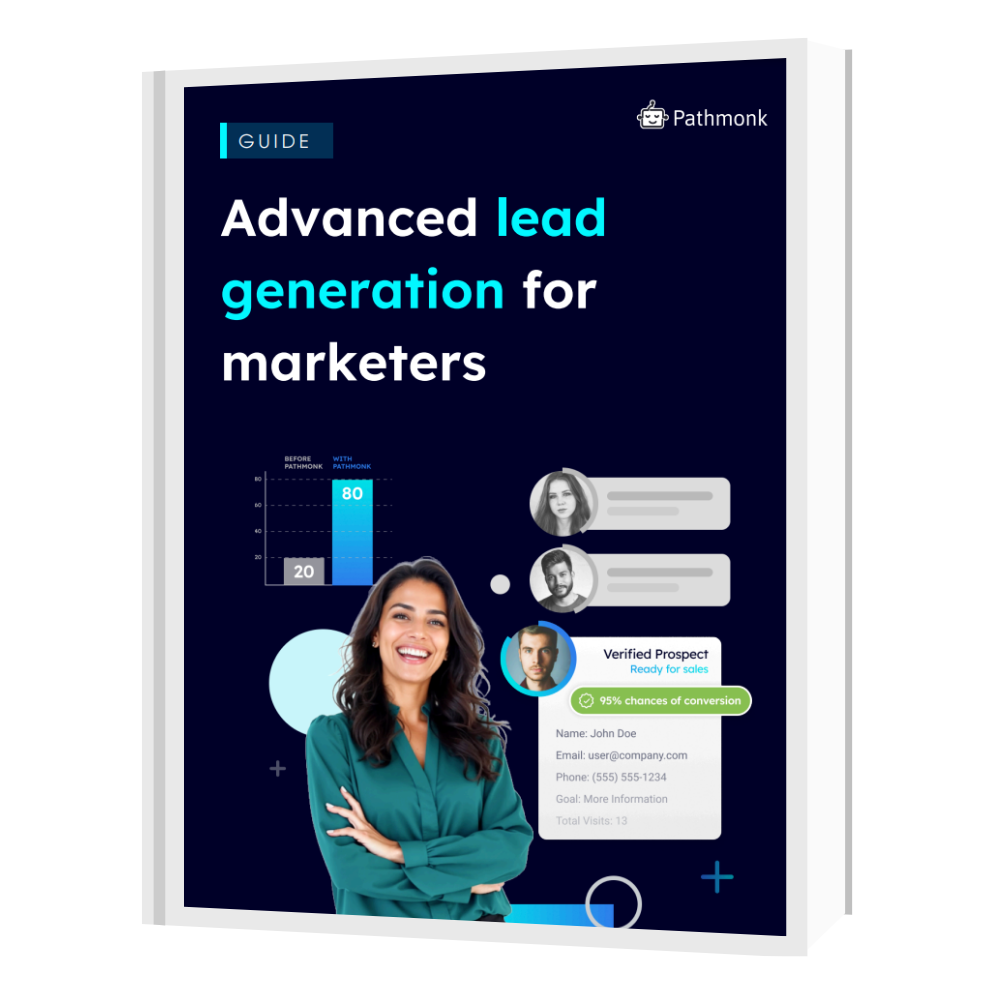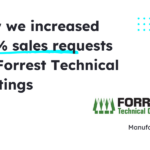
Effective qualification techniques and strategies are an important part of managing a sales funnel. Any time spent on business that you simply can’t win will do nothing but deplete your resources and hinder your ability to reach your sales goals and contribute to the company’s bottom line.
A lot of this wasted time and effort can be avoided, though, if the salesperson is able to align the value of their products/services with those of the prospective buyer.
This is the essence of sales qualification and it requires taking the necessary time to understand how the potential customer defines value and risk and how your company can establish itself as the one real solution for their problems.
There are many different sales qualification frameworks out there. Some are intended to help deal with complex sales deals while others are more effective at moving prospects through the funnel as quickly as possible.
One alternative to traditional sales qualification strategies, though, is SCOTSMAN, which adds a few twists to the regular formula to deliver results.
Generate better leads to grow your sales
Discover new strategies to unlocking a flood of high-quality leads from your website.

The Importance of Qualification
The right strategies will allow the sales team to focus on the leads that are ready to take the next step and avoid wasting time on those that aren’t.
However, things have changed over the years, and the simple assumptions that sales teams have made about how their prospects seek out their solutions in the past are no longer sufficient in the modern, competitive landscape.
Time, as a resource, has become more valuable than ever.
It is, in fact, one of the most critical elements of a sales team’s success, and if this resource is wasted on deals that are eventually lost, it can have a detrimental impact on their eventual success.
This means we cannot stress the importance of a strong qualification process enough.
When Qualification is Mishandled
In a traditional sales qualification framework, there is a possibility that leads can be mishandled, leading to a lot of missed opportunities and wasted time.
A lot of this is simply because the qualification process is just a matter of saying yes or no to a number of questions. The lead qualifies or it doesn’t. We should pursue the lead or we shouldn’t. And that’s as far as it goes.
Unfortunately, this means that sales productivity and win rates can be lowered because of time lost on supposedly qualified leads that no longer fit that criteria due to unexpected circumstances. The same could be said from the other side of the spectrum, in which a salesperson gives up on a lead because it first appeared to be unwinnable, even though the evolving situation could have led to something more.
There are certainly some pitfalls to the traditional model, but there are some ways around them.
An Ongoing Process
The most successful salespeople understand that qualification is not just a one-off activity.
It is something that has to be done consistently and regularly throughout the sales process.
Why?
Because things change all the time. The client’s needs, the competitive environment, the timescales, the available budget, and many other potential developments could change how the lead values your products or services.
It is critical to account for these changes throughout the sale. They need to be tracked and analyzed and compared against the right criteria to know whether or not it is still worth your time and effort.
And, at any point, if you determine that the prospect no longer meets the necessary criteria, you must be willing and able to end the process and shift your priorities.
This is where the SCOTSMAN framework can excel.
What is SCOTSMAN Qualification Framework?
SCOTSMAN is a highly reliable solution for opportunity qualification, and it has established its place in the sales landscape by accepting the fact that the buyer has the real power in this process.
Buyers, now, are willing and able to use a variety of online resources to educate themselves on their potential solutions. So much so that some estimates suggest that B2B buyers can be up to 60% through the buying process before they even make first contact with any sales team.
So, an alternative method that puts the buyer’s position first can be a powerful tool for the sales team.
The SCOTSMAN model was developed along those lines, allowing the team to quickly analyze and qualify their leads based on 8 important criteria.
- Solution – Does my product or service really solve their problem? Does it offer real value related to their needs?
- Competition – Do we know who the competition for this sale is? Does the prospect have a potential bias for someone else? Do they have a preferred supplier that we must outshine?
- Originality – What makes our offer unique? What makes our company unique? Can we effectively communicate this difference to the prospect?
- Timescales – Are we able to provide our products/services on the client’s timescales? Are they realistic in their requirements?
- Size – What is the size or scope of this opportunity? It there enough potential to follow through? Will it contribute to our sales goals?
- Money – What is the client’s budget, and is it a realistic? Will the product/service fit within that range?
- Authority – Are we dealing with the final decision-maker? Does this person have the authority to determine how and where they will allocate their budget?
- Need – Does the prospect understand their own need for this product or service? Can we say for sure that they actually do need this solution?

An Important Difference
The biggest difference between SCOTSMAN and traditional sales qualification systems is that it requires the sales person to test the sale against each of the 8 areas in one of three ways, rather than relying on the regular “yes/no” answers.
In this framework, the answers should fall into one of these categories:
- There are no problems with the current prospect, so you proceed with the sale. You know their budget and the solution you are offering falls safely within those restrictions.
- There are obvious problems – either too many or too big – so you drop the sale. It is clear that the product or service cannot be delivered on their timescales or budget.
- There are problems that we have yet to identify, so other meetings may be necessary. We need to establish how decisions are made and who will make them.
Combining Qualification and Commitment
Commitments are the most important part of the SCOTSMAN solution.
The normal qualification questions can help a salesperson get the process started, but they can still miss an important part of the big picture.
This is because it’s possible that the answers to all the qualification questions could be positive, but then all you know is that there is a real project here and that the prospect is serious about making some kind of decision.
However, these questions do not tell you if the prospect is serious about you. They do not tell you that the prospect has seen what makes you different from the competition and that they are giving you any particular preference over anyone else.
If, on the other hand, you know that you do have the advantage and that the lead has a vested interest in working with you, then you know that they have some kind of commitment.
This, in turn, can indicate a larger likelihood of success.
What questions should you ask to understand their commitments?
- Do you have access to the key people in the business, or are you being kept away from the real decision makers?
- Have they set a timetable by which they will complete the evaluation of the offer?
- Do you have any particular influence on their decision-making process?
- Are they willing and able to adjust their plans to fit with your ability to deliver the product or service?
When you begin to see positive answers to these questions, that’s when your close rate will begin to increase.
Qualification questions will tell you if it’s possible for the prospect to choose your solution.
Commitment questions will tell you that they are serious about choosing you as the provider of that solution.
You get to go beyond “Will they act?” and focus on: “Will they act with me?” and “Will they act now?”
The Benefits of the SCOTSMAN Method
When sales teams move beyond just qualifying leads and get into commitments, there are several potential benefits.
The most immediate of which is a better understanding of the pipeline, which means the salesperson can expect improved sales forecasting and predictability.
This also means that the sales team will be more able to follow through with qualified leads or quit an opportunity that isn’t going to go anywhere. In other words, teams can see higher success rates and fewer lost sales.
Time is a precious resource in a competitive landscape, and the SCOTSMAN qualification framework has the potential to help save your time and prioritize your opportunities and see the best results.
Understand your customer journey analytics
See how your users behave, find drop-offs, and receive actionable insights with AI.









